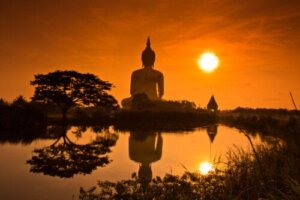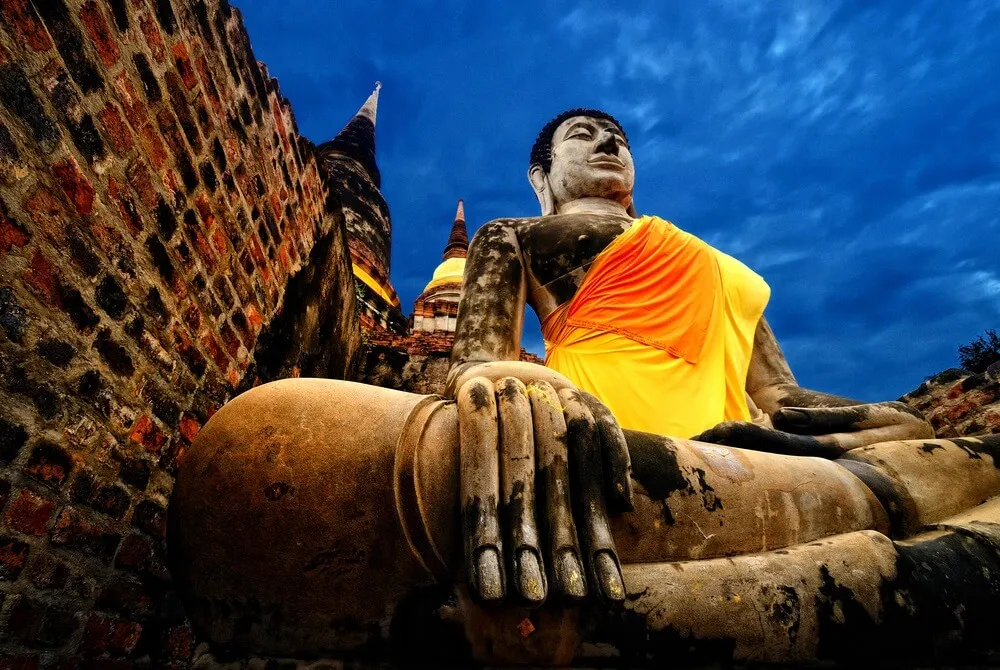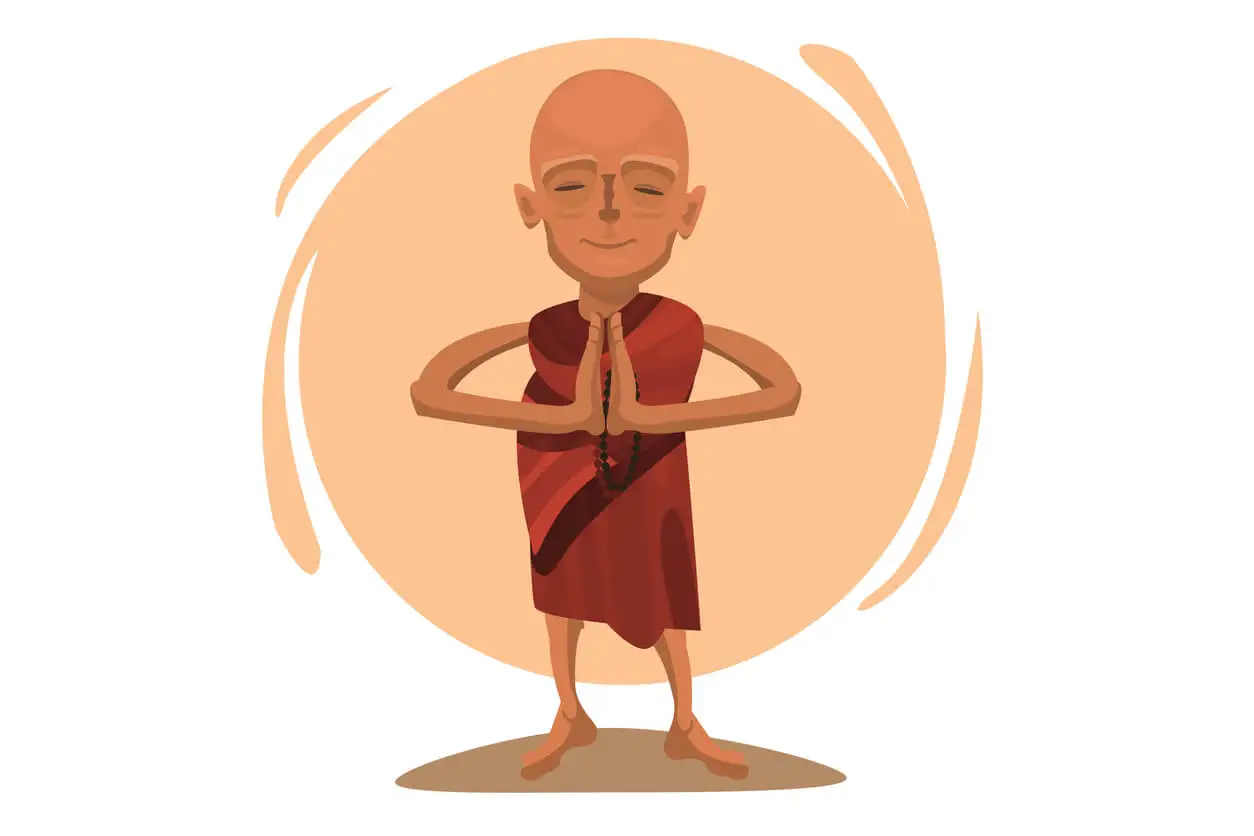The Types of Buddhism and How They Differ

Although non-followers often perceive Buddhism as a uniform belief system, the truth is that it’s as diverse as any other. So we can find several types. Although they follow the same goals, they differ in how to achieve them.
Buddhism is one of the world’s most important religions. It originated 2500 years ago in India, with Siddhārtha Gautama (Buddha), and spread over the following millennia throughout Asia and the rest of the planet.
This doctrine comprises a variety of traditions, religious beliefs, and spiritual practices attributed to Buddha. However, it has been a controversial religion. After the ascetic’s death, in an attempt to perpetuate his teachings and honor his example, various types of Buddhism emerged.
The following is a brief presentation of the teachings of this doctrine and the different types of Buddhism that have derived from it.
Buddha and his philosophy
Siddhārtha Gautama was a Hindu prince of the 5th century BC who, after seeing poor and dying people, realized that human life is suffering. From there, he renounced his wealth and dedicated himself to asceticism, attaining enlightenment by recognizing the transience inherent in all aspects of life and understanding how it can be lived without suffering.
He thus developed the concept of the Four Noble Truths according to which suffering in life is caused by attachment to things. He also developed the eightfold path, which refers to the spiritual discipline to be followed to free oneself from attachment and the pain of desire and loss.
In this sense, Buddhists believe that human life is a cycle of suffering and rebirth (souls are born again in different bodies, depending on how they behaved in previous lives). However, if one reaches a state of enlightenment (nirvana), it’s possible to escape this cycle forever.
Buddha preached his teachings from the time he reached enlightenment until his death at the age of 80. Before his death, the ascetic asked his disciples not to choose a leader, but to follow their own path and to lay his remains to rest in a Stupa at a crossroads.
However, none of his requests were granted. His disciples quickly organized themselves into groups, headed by a leader, and divided up his remains, each choosing a place to lay them in a Stupa.
Subsequently, doctrinal differences arose among the Buddha’s followers. This led to further divisions within the community.

Types of Buddhism
Broadly speaking, there are three main types of Buddhism:
- Theravada
- Mahayana
- Vajrayana
They all uphold the belief in the Four Noble Truths and the Eightfold Path as preached by the Buddha. However, they differ in how to follow that path.
Read about: The 12 Laws of Karma and Their Explanation
Theravada Buddhism
Theravada is the oldest form of Buddhism in existence and translates as the “way of the elders”. This school is based on the Pali Canon, which refers to the collection of the earliest teachings and discourses of the Buddha.
Theravada can be considered the most conservative type of Buddhism, as it follows the oldest teachings of the Buddha and does not add new scriptures. Its aim is to cultivate liberation and become an Arhat (one who has attained nirvana), without the obligation to teach others the path to enlightenment.
Although, those who do achieve this can teach others if they choose to do so. However, unlike Mahayana Buddhism, the goal is not to become a spiritual guide, but to free oneself from samsara (the eternal repetition of reincarnation and death). Theravada Buddhism is divided into a clergy of monks and a congregation of lay people, with the monks understood to be more spiritually advanced than the rest.
Among the individual traditions, teachers focus on different practices that lead to awakening. Some traditions encourage reading the Suttas repeatedly, while others focus on concentrated meditation to work toward awakening.
Theravada Buddhism is most popular in Southeast Asia, in countries such as Thailand, Burma (Myanmar), Cambodia, and Laos.
Mahayana Buddhism
Mahayana, meaning “great vehicle,” is the largest school of Buddhism. It’s popular in many countries in Asia, including Nepal, Tibet, Japan, China, Taiwan, Korea, Vietnam, and Mongolia.
The Mahayana school believes that all human beings possess a Buddha nature and can attain transcendent consciousness. The aim of the practice is not to attain enlightenment for oneself, but to cultivate Buddhahood for all people. For this reason, many adepts take the Bodhisattva vows, which is the promise to return to this world until all living beings are free from suffering.
Unlike Theravada, many Mahayana traditions contain teachings outside the Pali canon. Within this school, there were many revered teachers and sutras. These include popular teachings, such as the Lotus Sutra or the Heart Sutra.
Meditation practice also includes more chants and mantras, especially in Tibetan traditions.
Read about: Jiddu Krishnamurti: Important Indian Philosopher and His Contributions
Vajrayana
Vajrayana (“diamond vehicle”) Buddhism is so called because of its association of enlightenment with an indestructible substance. Some consider this school to be a variety of Mahayana; however, other scholars argue that it’s a specific type of Buddhism.
In both Theravada and Mahayana Buddhism, one decides to follow the path, accepts the Four Noble Truths and the Eightfold Path as legitimate, and commits to a spiritual discipline that will lead to enlightenment, renouncing useless habits.
However, in Vajrayana Buddhism, practitioners assume that we all have a Buddha nature. Mahayana also affirms this, but in Vajrayana, one only has to realize this to fully awaken.
Therefore, an adept does not have to give up bad habits immediately to begin work on the path. They just have to commit to following it. Then, the desire for harmful or unhealthy behaviors will gradually fade away.
In other words, instead of distancing oneself from the desire, one walks through it, abandoning the attachment. As in Mahayana Buddhism, the Vajrayana school focuses on becoming a Bodhisattva to guide others.
The Dalai Lama, often considered the spiritual leader of all Buddhists, is technically only the spiritual leader of the Vajrayana school. His views are in tune with this school of Buddhism.

All types of Buddhism are later interpretations
At present, it’s impossible to determine which of the types of Buddhism is the most faithful to Buddha’s original vision. The master left nothing written down. He lived according to his beliefs and tried to help others overcome their suffering.
The first Buddhist texts were written by his followers centuries after the Buddha’s death. Whatever the case, the fact remains that Siddhārtha Gautama founded a belief system that has more than 500 million followers and that, for centuries, it has offered people a path to spiritual peace.
All cited sources were thoroughly reviewed by our team to ensure their quality, reliability, currency, and validity. The bibliography of this article was considered reliable and of academic or scientific accuracy.
- Páez Y. Buddha: una psicología del deseo, una epistemología de la ilusión. Psicogente [Internet]. 2010;13(23): 145-157. Disponible en: https://www.redalyc.org/pdf/4975/497552355011.pdf
- Siderits M. Buddha [Internet]. California: Stanford Encyclopedia of Philosophy; 2019. Disponible en: https://plato.stanford.edu/entries/buddha/
This text is provided for informational purposes only and does not replace consultation with a professional. If in doubt, consult your specialist.








